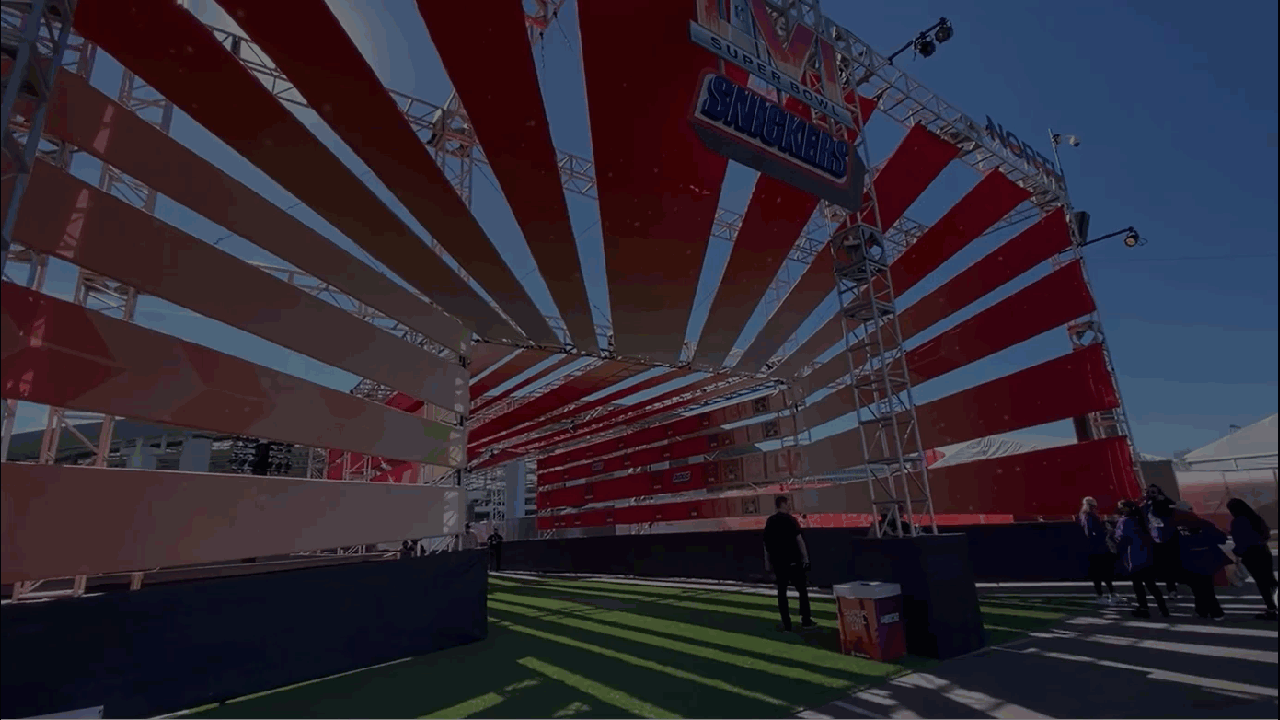
Fans at Super Bowl LVl entered SoFi Stadium in Los Angeles through a larger than life experiential portal, inspired by a camera lens. The concept was to create iconic entry points that would function as a portal to the game day experience. Taking cues from LA’s Hollywood magic, the structures are shaped like a camera’s aperture — gathering in fans and focusing them on a carefully curated view of the stadium beyond. The “ribbons” are reminiscent of movie film strips and celebrate key moments in Super Bowl history. Sponsorship was woven into the design to provide revenue generating opportunities. Brilliant red against an equally brilliant blue sky, the portal exemplifies the extensive design features and installations created every year to complement major events for sports entities like the NFL, NBA, NHL, and collegiate sport teams across the nation. Experiential Design features like this create one of a kind experiences that amplify the sense of place of the event, team or location and provide instagrammable moments that extend the experience far beyond the physical footprint of the event.
The intent for the entry portals at Super Bowl LVI was to make each of the 70,000 fans feel like a VIP, amplify the sense of place of LA and SoFi, and contribute something new to the fan experience. The portal, 90 feet long, 30 feet tall, and 80 feet across, formed a wide, dramatic aperture that narrowed, bringing attendees to the moment when the stadium was revealed. IA’s design of the portal, installed at the stadium’s four gates, created a shared human experience, eliciting oohs and aahs from fans of all ages. Experiential Design Director Jemma Radick was on-hand to ensure that the portal's installation went smoothly, and to gauge the crowd's reaction. Despite her extensive background in creating a variety of experiences for sports, Radick reports that “Being present to watch the very first fans enter through one of the portals was a goosebump moment.”

At the college level, experiential design not only enhances sports events and venues but routinely creates carefully curated experiences intended to attract talented recruits—visiting campus with their parents for a taste of what the future might bring—that the host college or university, with its irresistible history, sports expertise, excitement, and ongoing excellence, is the only place to be. Designers work with coaches and administrators to craft the recruiting path, with the visit inevitably ending at a closing room specifically planned as an impactful, interactive experience that celebrates the institution’s merits and convinces the candidate that any other choice would be unthinkable.
For the workplace where talent is equally prized, are their lessons to be learned from this approach? We think there are. The candidate visit usually starts at reception and progresses to introductions and dialogue with key players, followed by a tour of the workspace. From beginning to end, the tour, supported by the physical environment, should present an impressive, sequenced narrative about the company and the recruit’s opportunities. But the visit often concludes with a pitch delivered in a standard conference room and an anticlimactic walk back through reception to the elevator lobby or entrance. Might a compelling experience that captures the heart and spirt of the organization be a more powerful finale to an extraordinary visit meant to persuade the candidate that this is the best choice for their future?
Borrowing from the collegiate playbook, curating a recruiting path, concluding with a closing room with an array of aspirational features could be the culmination of an elevated experience leading to a sign-on.
With the current focus on the workplace as a destination and the increasing demand for experiential moments within workspace designs, the inspiring features of a closing room could double as a stirring amenity for staff and visitors. This dynamic venue would be one more asset in the arsenal of an organization that understands the power of place and face-to-face interaction in building culture and inspiring retention and recruitment.
